Change your location or even the server at your current one? I can access.
Yes they do!
Ohhhh, you were talking about YOUR "Wood Duck" and I likely live in another country and our "Wood Duck" is different. Wondered why the photo was off; "this person doesn't even know what a Australian Wood Duck looks like, what a flaming galah".
One of the world’s longest commercial trials of a seaweed supplement that the global meat industry hopes could slash methane from beef cattle has recorded much lower reductions in the potent greenhouse gas than previous studies.
'Open by Default' in app settings though I would have thought once you installed, it would have asked which app player you wanted to set as default. I always select 'Just Once' because sometimes popup player is preferred over video player or background.
Hopefully pictures are self-explanatory.
Note: Tubular is the sponsorblock fork of Newpipe.


Yes, the atomic/immutable version.
Universal Blue spin adds some extras.
I'm running Mint at 75. I'll jump into my Fedora dual boot and check.
Edit: works in ublue kinoite.

My monitor will only do 75 over Displayport. 60 with HDMI.
Could be the issue like you say.
There is no reason not to use Syncthing besides KDEConnect has features other than sharing files that might come in handy.
Syncthing is a much better tool for a hands-off approach once set up so sure, why not?
The Windows version used to be shit. That's no longer a problem. That's about the only negative I remember. Otherwise you can have it doing a lot of work between devices or only sending when you feel like it. I force stop it on my phone and then invoke through share when needed.
I brought up Syncthing as it will function the same way, in a more hands off way (by choice if you want, automagically or forced) if you needed to share files/folders between devices. Not only for passwords.
Local file sharing:
I use KDEConnect on all my devices (Windows, Linux, GrapheneOS, Work Galaxy Tab) and it works just fine. Never needed to try anything else.
Syncthing as well for keepass files.
In Australia, the Rurals do it for free. You get paid in "camaraderie/comradery".
Pinch Mini and Punch Bug. 2 for old school, one for new.
Neighbours injected "Spotto", a punch for a yellow car.
And that was it. No rules about arguing or how hard you hit, no holds barred in the back seat.
And then to make it even more complex, the more diverse number of soil species that dwarfs the above ground species that are more fragile to hooves, fire, and UV that have been completely lost (not even studied before they were lost).
Humans could have kept track of a percentage of above ground species for introduction but the technology was barely there to even imagine what was lost in erosion and fire. And that likely underpins everything above ground.
It sucks but we keep on soldiering on.
This is old thinking at this point. There are other things affecting insect populations that a garden will not fix.
https://www.theverge.com/24137380/forest-restoration-costa-rica-guanacaste-conservation-tree
Still plant a garden though!
I'm just trying to work out where the Sunshine Coast one is. Most of the sites are down.
https://vimeo.com/836414800 - promotional video
I hope that people who say "plant locally-adapted" plants read this.
What makes you smarter than people studying these problems? A single example of a plant introduced in 1963?
You can't just declare your opinion to be right. And you can't ignore climate change to suit your argument. Nor can you deny that urban areas are very diverse in exotic tree species and that won't change because you want it to. A single comment isn't putting the genie back in the bottle, nor stopping climate change, or land degradation/clearing, or new pests and diseases.
Stay optimistic though.
I've had a debate about this before. Yeah, there are modern videos with modern tools and well-explained techniques but nothing comes close to how simply and naturally they do it. Lost experience.
A hedge post isn't the same without the classic hedgelaying video:
Outrage in Colaton Raleigh after trees felled by government agency without consulting community
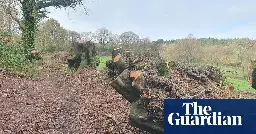
Residents of Colaton Raleigh village in Devon, England were upset after discovering that 100 ancient beech trees located on a conservation site had been felled without consulting the local community. The Forestry Commission approved an application by a local landowner to cut down the trees. Residents said the trees were an important part of the local heritage and habitat, and that it will take over 200 years for new trees to regrow. Experts said engaging local communities is important for conservation decisions.
For centuries, hedgerows defined the boundaries of agriculture. A hedgerow can be made up of any densely planted growth bordering a field that is
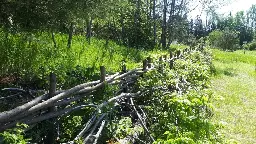
Some midwestern fields are still bordered by hedgerows, but most US farmers don't plant hedgerows and are skeptical of their benefits, worrying that they might introduce pests or predators to their farmland.
North American farmers are also loath to reduce the size of their crop-producing land by adding a living border or to deal with potential difficulties when the hedgerows require maintenance.
Even in the United Kingdom, hedgerows experienced a downturn in popularity as farmers moved towards more heavy equipment for working their fields and maintaining their boundaries.
While US farmers have been slower to embrace hedgerows for their ecological benefits, the science of hedgerows as natural havens has become inarguable.
A farmer looking to embrace the benefits of hedgerows as field boundaries first has to identify what kind of boundary they need.
https://inv.vern.cc/watch?v=WoprVhpOKIk - Hedging (1942)

This is a future I don't want to live in.
Seriously though, here's the article:
https://www.abc.net.au/news/2023-11-17/gloucester-dave-evans-bicentennial-trees-closed-wa-government/103118524
- The Gloucester and Dave Evans Bicentennial Trees will be closed for the next 12 months
- The state government has not ruled out permanently closing the trees for climbing
- Climbing the 60-metre tall trees is a popular activity for tourists
The removal of senescing trees or those which pose a genuine risk to health or property is part of professional urban tree management.

The removal of senescing trees or those which pose a genuine risk to health or property is part of professional urban tree management. However, there are many requests for tree removals that are not based on a genuine likelihood of injury or property damage, but rather on an unfounded fear of what might happen or where the tree is considered to be in the way of some other activity. Across Australia, about 97% of requests for tree removals made to local government authorities are ultimately approved. Such a high rate of approvals provides a threat to the fabric of the urban forest.
In many instances, the removal of sound and healthy mature trees has unexpected costs and consequences. The loss of shade can have an effect on the temperature experienced within a dwelling over summer and this may have health consequences in terms of heat-related illnesses if the occupants are elderly. Swelling of reactive clay soils may be exacerbated by a tree removal, which can contribute to problems with footings and foundations and wind damage may also be greater after the removal of a tree than it was when the tree provided a filtering of and shelter from strong wind.
Too often the consequences of removing safe and healthy trees are not fully considered when undertaking the cost-benefit analysis associated with any proposed tree removal. This brief paper provides a framework for decision-making that could be used in defending safe and healthy trees from removal and allows the identification of any unforeseen consequences from such removals.
As our climate warms, urban trees will be needed more than ever. A study looks at how they can be protected
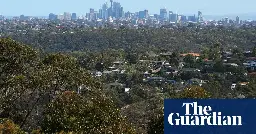
Researchers investigated the impact of extreme heat on trees during Australia’s last major heatwave, in 2019 and 2020. They found species with large thin leaves, such as red maple, were particularly vulnerable to extreme heat, whereas trees with thicker leaves, such as ash and Chinese elm, were better able to regulate their temperature. The results, published in Global Change Biology, show that access to water is also crucial, with well-watered trees able to open their pores and evaporate water, preventing scorching of leaves.
As our climate heats, heatwaves are going to become more frequent, giving urban trees a tough time. Planting heat-resilient tree species is important, but we also need to consider new techniques to protect our urban trees, such as irrigation pits to capture and store stormwater, or rain gardens (gullies planted with vegetation that absorb and store flood runoff). Trees have never been more needed.
Study:
https://onlinelibrary.wiley.com/doi/full/10.1111/gcb.16929
Abstract
High air temperatures increase atmospheric vapor pressure deficit (VPD) and the severity of drought, threatening forests worldwide. Plants regulate stomata to maximize carbon gain and minimize water loss, resulting in a close coupling between net photosynthesis (Anet) and stomatal conductance (gs). However, evidence for decoupling of gs from Anet under extreme heat has been found. Such a response both enhances survival of leaves during heat events but also quickly depletes available water. To understand the prevalence and significance of this decoupling, we measured leaf gas exchange in 26 tree and shrub species growing in the glasshouse or at an urban site in Sydney, Australia on hot days (maximum Tair > 40°C). We hypothesized that on hot days plants with ample water access would exhibit reduced Anet and use transpirational cooling leading to stomatal decoupling, whereas plants with limited water access would rely on other mechanisms to avoid lethal temperatures. Instead, evidence for stomatal decoupling was found regardless of plant water access. Transpiration of well-watered plants was 23% higher than model predictions during heatwaves, which effectively cooled leaves below air temperature. For hotter, droughted plants, the increase in transpiration during heatwaves was even more pronounced—gs was 77% higher than model predictions. Stomatal decoupling was found for most broadleaf evergreen and broadleaf deciduous species at the urban site, including some wilted trees with limited water access. Decoupling may simply be a passive consequence of the physical effects of high temperature on plant leaves through increased cuticular conductance of water vapor, or stomatal decoupling may be an adaptive response that is actively regulated by stomatal opening under high temperatures. This temperature response is not yet included in any land surface model, suggesting that model predictions of evapotranspiration may be underpredicted at high temperature and high VPD.
Scientists are learning more about “sesquiterpenes" vapors made from trees.

Clouds are the largest source of uncertainty in climate predictions.
In a paper published this month in Science Advances, Dada's team establishes a new heavy hitter in cloud creation: a kind of chemical released by trees.
The role of trees in seeding clouds is important, because it suggests what the sky above some regions might be like if governments manage to tamp down sulfur emissions.
In a world with less pollution, plants and trees will become more dominant drivers of cloud formation, an echo of the premodern world.
While anthropogenic emissions dominate cloud formation in populated areas, plant volatiles dominate over more pristine land elsewhere.
Climate change and a range of human-caused factors have disrupted the habitats of many California native trees and other plant species. Efforts to protect or relocate plant species would be bolstered by understanding which habitats are best suited for each species. A new study identified a range of ...

Human-caused climate change is altering the temperatures and rainfall patterns to which those and other trees are accustomed, and many have already been pushed close to the edge of what they can endure.
Industry and urban growth have pushed many of them to the edges of their habitats, and climate change has only exacerbated the problem.
The model also enables the scientists to estimate how mismatched a plant is from its native climate.
"Plant species can directly reveal to us their climate preference and their vulnerability to potential climate change in the 'language' of their leaves and wood," said Sack, the paper's senior author.
"We are tuning in to what the plants are telling us about their preferences, in the language of their tissues and physiology, aiming to help them survive escalating climate challenges."
"The reflection of species' preferred climate in their wood and leaves evidently arose from millennia of evolution that matched plant physiology to climate across California," Medeiros said.
"We also found that many plants in the ecosystems we sampled were occupying locations that differed in climate from what we estimated to be their optimal niche. As climate change ensues, we think this will tend to aggravate the sensitivity of many species, including common trees like the California buckeye and shrubs like the purple sage and California lilacs."

YouTube Video
Click to view this content.
https://yewtu.be/watch?v=Tb8JLB__GvM
A short documentary film set in Her Majesty's Prisons in Kingstown, St. Vincent and the Grenadines, West Indies. Shot and edited by Aiko Roudette, this film was funded by the Mustique Charitable Trust.
This film documents the progress and achievements of a very successful rehabilitation program that was introduced to the prison by artist Vonnie Roudette.
This is a vetiver grass work program, during which inmates are trained in the traditional techniques of grass cutting, plaiting, weaving and stitching. They have produced hundreds of products to date, including table mats and coasters, floor mats of varying sizes and styles, small and large baskets. Inmates have taken such a keen interest and strong initiative that they have developed entirely original techniques and designs in collaboration with Vonnie Roudette. Apart from their technical skills the inmates have demonstrated increased willingness to collaborate with each other, which has led to a more peaceable and relaxed environment within the prison. Many of them previously had no hopes about what they could do with their lives when they leave the institution, but now they are excited about the possibilities provided by this new skills set that they are learning.
This project began in 2015 as a short 6 week training workshop in Her Majesty's Prisons, in Kingstown St. Vincent. At that point it was funded by the FAO and facilitated by Vonnie Roudette.
Following the discontinuation of the funding in October 2015 Vonnie Roudette continued working with the inmates voluntarily until she secured a second round of funding from the Mustique Charitable Trusts. This funding supported the project from September 2016 to March 2018.
These products are marketed under the label 'Grow In Time'. Clients have include Young Island Resort, the Prime Minister's Official Residence and numerous local individuals. The products are also presented at the bi-annual Mustique Craft Fair where usually every grass product is purchased by Mustique residents.
Part II: https://yewtu.be/watch?v=w0M1Noq_Ubo
Slash and burn farming is rapidly destroying the world’s remaining rainforests and sending vast amounts of carbon dioxide into the atmosphere. Yet for more than 250 million farmers across the world, it is the only way they can survive.
Through implementing Inga Alley Cropping – the sustainable alternative to slash and burn – we can change this. By supporting farmers to take up this technique, the Inga Foundation gives them the ability to feed their families and improve their livelihoods, whilst keeping the rainforest and its rich biodiversity intact.
So if you agree with us that it’s time to stop the destructive practice of slash and burn, for the sake of families and forest alike, then please help us bring it to an end...
http://www.ingafoundation.org/the-inga-model/
Mistletoes are ecological keystones that boost habitat value for wildlife, so we added them to established plane trees in the inner city.
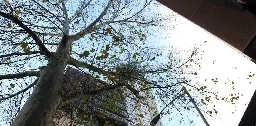
cross-posted from: https://aussie.zone/post/2027785
> Unlike other plants that can be grown as seedlings and planted out, mistletoes rely on animals to plant their seeds on the branches of host trees. > > We set out on a world-first trial to attempt to reintroduce mistletoe to the trees of Melbourne. > > All of Australia's mistletoes are native species. > > Working closely with City of Melbourne staff, research scientists from the Gulbali Institute undertook a world-first trial of the reintroduction of a native mistletoe to street trees. > > Five years after inoculation, we found mistletoes had established on five trees.

Just kidding. These are Eucalyptus pollards before the cut was tidied up.
https://www.lowtechmagazine.com/2020/09/how-to-make-biomass-energy-sustainable-again.html/
[!22a3f058-7617-45d5-9130-d954f6b0ec13.jpg](https://postimg.cc/G9fCTMqw)
[!7def12ad-9c55-4774-8fc6-8bdaec2c4d55.jpg](https://postimg.cc/yWxKdqhy)
[!0537ac90-945a-43a1-9aa2-71adbc6edef1.jpg](https://postimg.cc/2VqCHpVS)
[!25fc7037-0588-475d-ba31-9d839bbae8b6.jpg](https://postimg.cc/rD1XbqcM)
[!14df308c-10e8-489a-ae3b-c0281b218a64.jpg](https://postimg.cc/TyTMvBYm)
[!07907ced-f38d-4848-a630-71ef3ee3a588.jpg](https://postimg.cc/mtFGYQ5c)
The loss of so many trees in Sydney’s Castle Cove represents the theft of environmental benefits and services from future generations of Australians.
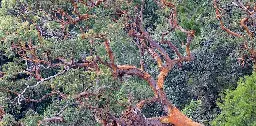
cross-posted from: https://aussie.zone/post/1760733
> In most illegal tree removals, you might see perhaps a handful of trees removed or poisoned. > > It does mean, however, there should be no removal of large old trees without significant and demonstrably sound reasons. > > Both carbon stores and shade are crucial to mitigating future climate change. > > The loss of even a single tree comes at a huge price The loss of so many trees in Sydney’s Castle Cove represents theft of environmental benefits and services from at least two, if not more, future generations of Australians. > > Simply planting new trees doesn’t fix the problem We tend to undervalue the shade provided by trees when considering urban development, or even road works. > > In some instances, a one-for-one tree replacement is offered.
Climate change, deforestation and other human threats are driving the rainforest towards a tipping point of sustainability. Researchers are racing to chart the Amazon’s future.
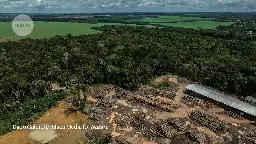
Luciana Gatti stares grimly out of the window of the small aircraft as it takes off from the city of Santarém, Brazil, in the heart of the eastern Amazon forest.
The land ecosystems of the world together absorb about 30% of the carbon dioxide released by burning fossil fuels; scientists think that most of this takes place in forests, and the Amazon is by far the world's largest contiguous forest.
I've travelled to Santarém, where the Tapajós River joins the Amazon River, to join Gatti and other scientists trying to determine whether the forest is heading for an irreversible transformation towards a degraded form of savannah.
While passing over one huge, newly razed parcel of Amazon forest, Gatti's voice crackles over the plane's intercom.
A 2015 analysis of 321 plots of Amazon primary forest with no overt human impacts reported "a long-term decreasing trend of carbon accumulation".
That's a change from previous decades, when censuses indicated that such primary forest in the Amazon was storing more carbon.
The fate of the Amazon is on Gatti's mind as she climbs a lattice tower in the Tapajós forest - one of the landmarks her pilots fly over as they collect air samples.
Tall. Straight. Abundant flowers. And a stunning trunk. What’s not to like about the spotted gum?
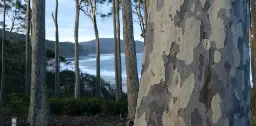
cross-posted from: https://aussie.zone/post/1641341
> You may well have seen a spotted gum growing happily on an urban street. > > Their wonderfully straight, light coloured and spotted trunks are impressive whether trees are planted singly, in avenues or in boulevards. > > Old trees can get over 60m. During profuse flowering, anthers shed from a single tree can cover the ground, paths, homes, roads and vehicles in a white snow-like frosting. > > In nature, the spotted gum and close relatives, the lemon scented gum and large leafed spotted gum grow along the east coast of Australia, from far eastern Victoria to southern Queensland. > > It has the potential to be one of the great urban tree species, not just in Australia but internationally. > > Horticulturalists have been working to make the tree even better suited to urban use. > > Some varieties were uncommon or didn't exist 50 years ago, which means old urban trees might be more likely to shed limbs or have less attractive forms.
Early in the pandemic, when there was much less traffic on the roads, people took to their bikes. But since then, fewer people are cycling, with rates now lower than in 2011.
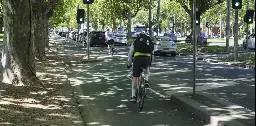
Two-thirds of people want more transport funding to go into walking, cycling and public transport.
The decline in cycling probably shouldn't surprise us.
In the past 40 years, the percentage of children who walk or ride to school has dropped from 75% to 25%. Furthermore, cycling receives only about 2% of transport budgets.
As well as the three transport priorities, we can of course take many more actions that would help increase walking and cycling.
These measures include: boosting housing density, beautifying our neighbourhoods, programs to build people's confidence and skills to walk and cycle, such as beginners bike tours, and more frequent public transport.
In Sydney and Melbourne, a coalition of residents, officials and researchers is working to find ways to build more habitat for the superb fairywren and other threatened birds.
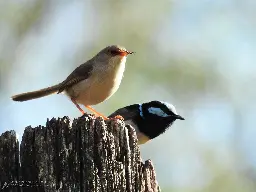
cross-posted from: https://aussie.zone/post/1550666
> "A century ago, small birds dominated around Sydney, not the large birds of today," ornithologist Tim Low wrote in his 2014 bestseller Where Song Began. > > The superb fairywren - Australia's 2021 bird of the year - is the poster child for two projects aiming to bring the small birds back to city life in both Sydney and Melbourne. > > "These much-loved birds are usually found in suburbs that have corridors of native bushland close by so their rapid disappearance, along with a number of other small bush birds, is cause for grave concern," BirdLife Australia said in a 2021 statement, adding that the probable cause was a loss of rich and diverse habitat due to urban sprawl and infill development. > > In Melbourne, the plan to stop this loss is surprisingly simple: Boost ecological connectivity by revegetating the beautiful Royal Park, band some fairywrens for identification, and harness social media and citizen science to find out exactly where the birds live in the city - and how many there are. > > In November 2022, local volunteers spent 15 minutes each in 50 locations, entering sightings of fairywrens and other small birds into BioCollect, a citizen science app. > > "We're just waiting to see the extent to which those small birds can travel along the habitat corridors. We haven't noticed a huge shift yet, but that is our goal." > > If possible, revegetate your own property for small birds, especially if you're near remnant habitat.
An outdated land management ideology with roots in colonialism is keeping California and the America West from taking essential steps toward mitigating increasingly destructive wildfires.
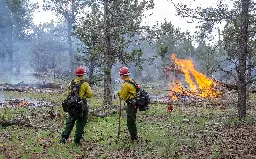
I joined McKay's popular Indigenous forest stewardship class expecting to master the use of prescribed burns to defend the forest.
Pepperwood has provided a model of how combining science with local Indigenous research, knowledge and practices can restore forest health and resiliency while mitigating the growing frequency and severity of fires.
While growing up, every trip to the forest offered McKay a lesson in where each plant loved to live, what it needed to thrive and how humans could read them to know if the land was out of balance.
He is the principal investigator of the UC-Berkeley Blodgett Forest Research Station, which led a two-decade study evaluating various forest treatments.
Hanson, who holds a doctorate in forest ecology from University of California, Davis, and his wife, Rachel Fazio, an attorney and co-lead of the John Muir Project, have filed dozens of suits against the U.S. Forest Service to block various plans to remove trees deemed a fire hazard.
Since 2017, Eisenberg, who also directs the university's Traditional Knowledge Lab, has been working with the U.S. Forest Service and the Bureau of Land Management to help public agencies strengthen partnerships with tribal nations on forest restoration projects.
As people gather their tools and begin to leave, I linger, asking for this oak's continued guidance on how to pay closer attention to its needs and the well-being of the entire forest community.
Soil with heavy metals contamination, mainly lead (Pb), cadmium (Cd), and chromium (Cr) is a progressively worldwide alarming environmental problem. Recently, biochar has been used as a soil amendment to remediate contaminated soils, but little work has been done to compare with other organic amendm...

Abstract Soil with heavy metals contamination, mainly lead (Pb), cadmium (Cd), and chromium (Cr) is a progressively worldwide alarming environmental problem. Recently, biochar has been used as a soil amendment to remediate contaminated soils, but little work has been done to compare with other organic amendments like compost. We investigated biochar and compost's comparative effect on Pb, Cd, and Cr immobilization in soil, photosynthesis, and growth of maize plants. Ten kg soil was placed in pots and were spiked with Pb, Cd, and Cr at concentrations 20, 10, 20 mg kg−1. The biochar and compost treatments included 0, 0.5, 1, 2, and 4% were separately applied to the soil. The crop from pots was harvested after 60 days. The results show that the highest reduction of AB-DTPA extractable Pb, Cd, and Cr in soil was 79%, 61% and 78% with 4% biochar, followed by 61%, 43% and 60% with 4% compost compared to the control, respectively. Similarly, the highest reduction in shoot Pb, Cd, and Cr concentration was 71%, 63% and 78%with 4% biochar, followed by 50%, 50% and 71% with 4% compost than the control, respectively. The maximum increase in shoot and dry root weight, total chlorophyll contents, and gas exchange characteristics were recorded with 4% biochar, followed by 4% compost than the control. The maximum increase in soil organic matter and total nitrogen (N) was recorded at 4% biochar application while available phosphorus and potassium in the soil at 4% compost application. It is concluded that both biochar and compost decreased heavy metals availability in the soil, reducing toxicity in the plant. However, biochar was most effective in reducing heavy metals content in soil and plant compared to compost. In the future, more low-cost, eco-friendly soil remediation methods should be developed for better soil health and plant productivity.
On Eurardy Reserve, Nanda Country, Western Australia, a project began four years ago to plant one million trees and shrubs. In 2019 we partnered with Carbon Positive Australia, a WA-based charity, to create the largest revegetation project in Bush Heritage's history.
cross-posted from: https://aussie.zone/post/1450297
> On Eurardy Reserve, Nanda Country, Western Australia, a project began four years ago to plant one million trees and shrubs. > > This winter alone, around a quarter of a million seedlings were planted over a 5-week period. > The planter, which has two seats for people to sit on, is pulled by a tractor. > > For its size, the project is the first of its kind with such a high level of biodiversity, helping to set a new standard. > > “Many carbon projects plant a handful of species, but this one has planted 62 to date,” Fiamma says. > > Last summer, Bush Heritage staff, volunteers, and professional collectors from APACE WA Nursery, braved Eurardy’s heat and flies to collect the seed used to raise seedlings in nurseries ready for this year’s planting.
Phytoextraction techniques utilizing a sterile strain of Vetiver grass (Vetiveria Chrysopogon zizanoides) along with soil amendments were evaluated for removing lead and other elements such as Zn, Cu, and Fe from the soil of a 50-year old active firing range at the Savannah River Site (SRS). Lead-contaminated soil (300–4500 ppm/kg) was collected, dried, placed in pots, fertilized, and used as a medium for growing transplanted Vetiver grass plants in a greenhouse. The uptake of metals by the plants was evaluated in response to various fertilization and pre-harvest treatment schemes. Baseline metal concentrations in the soil of all pots were measured prior to planting and when the plants were harvested. Plants grew better when fertilized with Osmocote® fertilizer in comparison to plants fertilized with 10-10-10 (NPK) fertilizer. Application of a chelating agent, EDTA, one week prior to harvest significantly increased the amount of lead that was phytoextracted. Lead concentrations of up to 1390–1450 ppm/kg in tissue samples were detected. Maximum Pb levels were observed in root tissues. The addition of non-lethal doses of a slow-release herbicide in combination with EDTA did not appear to further enhance phytoextraction or the translocation of Pb into shoots. The study indicated that the use of Vetiver grass coupled with the use of chelating soil amendments has considerable potential for use as a remedial strategy for lead-contaminated soils such as those associated with firing ranges.
